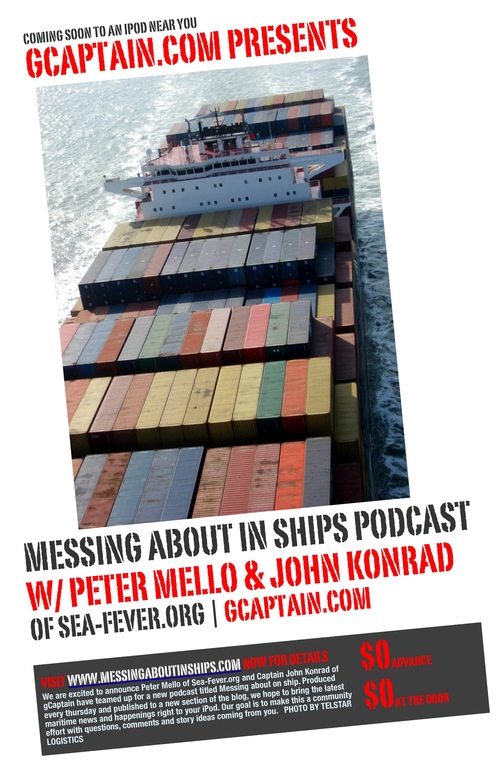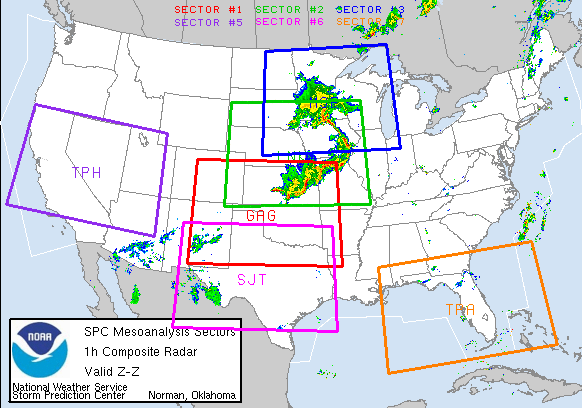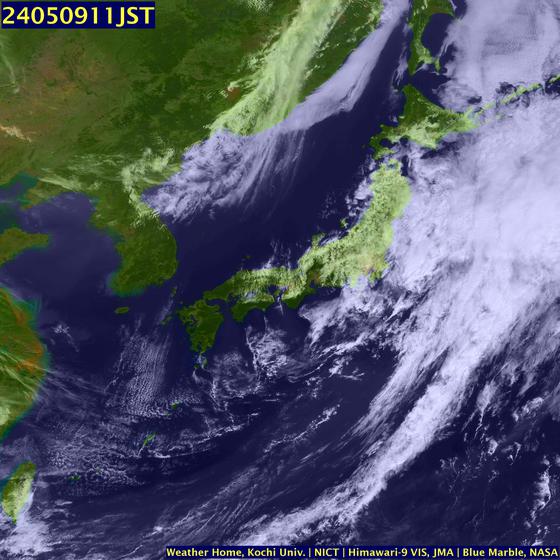 Ship-induced Waves Affect Snails, Crabs And Insect Larvae In Sandy Lakes And Rivers
Ship-induced Waves Affect Snails, Crabs And Insect Larvae In Sandy Lakes And RiversScienceDaily (Sep. 19, 2008) — Snails, crabs, insect larvae - the shores of rivers and lakes are populated by thousands of small animals that play an important role in the food chain of the freshwater ecosystem. They eat the leaves, among other things, which fall into the water, and so keep the waters clean.
Up to 10,000 organisms can be found on a square meter of water bottom, of which a lot are also terrestrial insect larvae. Scientists call the whole group macrozoobenthos - these are all invertebrates living on the bottom and still visible with naked eyes. Researchers at the Leibniz Institute of Freshwater Ecology and Inland Fisheries (IGB) now study the impact that ship-induced waves can have on these small animals.
The larva of Calopteryx splendens, a dragonfly, crawls on a stone in shallow water. Then operates Friederike Gabel the wave machine. A wave, comparable to that of a sport boat, runs along the three-metre-long canal.
The larva is washed out - "detached" say the researchers - and paddle around several minutes helplessly in the water until it found again the "solid ground" under its feet. “If they stay suspended in the water, the larvae take the risk to be eaten" explains F. Gabel, a specialist of the effect of waves on invertebrates. In addition, the larva spent energy to fix them back, which has negative effects on their growth and reproduction. The researchers fear that ship-induced waves increase larval mortality and subsequently biodiversity, which would have a long-term effect on the ecological quality of rivers and lakes.
Using an experimental set up, they have defined in laboratory for which threshold of wave strength the animals will be washed out from their standing place. They found that the more complex was the structure of the habitat, less massive was the detachment. "The impact of waves is the lowest, when the shore is covert with tree roots," explains F. Gabel. Even dense reed belts would provide a sufficient protection against the power of the waves to the animals. On the contrary, the detachment is maximal on sand and stones. Complex habitats reduce the impact of waves since they offer better hiding place and fixing possibilities for the animals, explains F. Gabel.
The researchers have now begun to collect samples in natural habitat. They want to determine the long-term impact of ship-induced waves on the invertebrates inhabiting the shore. They survey different locations of the River Havel and compare shore sections differently exposed to ship-induced wave intensity.
We are not against the ship traffic, stresses F. Gabel, however there is a need to find simple measures to protect the shores. "As a result of our investigations we could make recommendations for water management, such as the design of the shores or, that ships in certain areas should pass by far away from the shore or should lower their speed" said the scientist.
The results are now published in the journal Freshwater Biology (2008, 53, 1567-1578).
WEATHER NOTE
Survey finds holes in U.S. disaster preparedness
The survey found that 63% of parents would ignore orders to evacuate and instead attempt to reunite with their children, possibly hindering rescue efforts by adding to traffic congestion.
The authors of the study, released Thursday on the seventh anniversary of the Sept. 11 attacks, said that despite years of government efforts to enhance disaster preparedness, schools need to do more to plan for disasters and parents need to be made aware of the plans.
The report was commissioned by the National Center for Disaster Preparedness at Columbia University's Mailman School of Public Health and the Children's Health Fund.
Among parents of school-age children, 45% said they do not know the location where their children would be evacuated as part of the school's disaster plan.
"There should be an outcry from parents to push their schools and their school districts to develop a plan that makes sense," said Irwin Redlener, associate dean for public health preparedness at Columbia and president of the Children's Health Fund.
The federal Department of Homeland Security has allocated billions of dollars to help state and local governments set up disaster contingency plans.
But just 44% of the U.S. residents surveyed this year said they have all or some of the basic elements of a disaster preparedness plan, including food, water, a flashlight with extra batteries and a meeting place in case of evacuation.
The survey has been administered annually since 2002 by the Marist College Institute for Public Opinion.
The telephone survey of 1,579 adults was conducted between July 25 and Aug. 9. The margin of error for the entire survey was 2.5 percentage points. The margin of error for the subset of households with children was 4 percentage points.
Parents said Thursday they were not surprised by the finding that most of them would disregard evacuation orders and pick up their children.
Diana Ennen, of Margate, Florida, is the author of "The Home Office Recovery Plan: Disaster Preparedness for Your Home-Based Business" and a mother of three.
"As a mom, you wouldn't be able to keep me away from picking up my children," she said in an e-mail. "My first instinct would be to get them at all costs. I would literally run the entire distance to get them. I believe most parents would feel the same."
After the Storm - Angie’s List has tips for repairing your home after heavy rains, flooding
Indianapolis - In the wake of Hurricane Ike and other storms, homeowners are faced with another potential disaster: unscrupulous storm-chasing contractors with promises to help consumers quickly repair the damage for cash up-front.
More often than not, these contractors pocket the money, perform shoddy, little, or no work and disappear. Angie’s List (www.angieslist.com), the nation’s leading provider of local service company ratings, can help homeowners avoid the ne’er-do-well contractors and instead find the reliable, quality help they need. “The last thing consumers affected by the bad weather need is another thing to worry about,” said Angie’s List founder Angie Hicks. “If a person you don’t know comes to your door promising to help if you’ll just pay in cash, just say ‘no.’ With just a little research, you can find a reliable person who will get you back on the feet and keep you there.”
Angie’s List tips to avoid shady storm chasers:
• What not to do: If a stranger comes to your storm-ravaged yard offering to repair your roof, remove trees or do other major repair work for cash upfront, just say no. Chances are, he or she will take your money and disappear, leaving you with little or no recourse.
• Do your research: Check Angie’s List to get some insight into local service companies. Check the status of the contractor’s bonding and liability insurance coverage too. While you might get lucky working with an independent provider who lists his truck as a permanent address, remember that you have few options if the job goes awry or the provider disappears.
• Quality is worth the wait: When massive storms hit, tree services, plumbers, roofers and hauling companies are in high demand and the best performers are generally the busiest. Beware the company with time on its hands when every other similar company can’t even answer the phones.
• Get estimates: Though your situation might seem to be one of desperation, avoid settling on the first contractor who comes along and offers to do the job. Take enough time to get at least a few different estimates on the job.
• Document important information: The same holds true for the old adage to “get it in writing,” including the price, materials to be used and the timeline for completing the job. This is often the best ammunition you have if things go wrong. For homeowners with water damage, cleaning up the mud and water-soaked belongings can seem like the biggest task at hand. But drying out that area is equally important because if left damp too long, dangerous mold can grow. If the mold growth is small, you can clean and kill it with these steps.
1. Damp wipe: Mold can generally be removed from hard surfaces by scrubbing with water and detergent. It is important to dry the surface quickly.
2. Wear protective gear: Protect your hands with gloves and your eyes with goggles.
3. Discard: Remove damaged materials and seal in plastic bags.
4. Follow up: Revisit the site. It should show no signs of water damage or mold growth. Wide spread mold growth may require professional assistance. Angie advises following these tips when choosing a professional for remediation projects:
• Testing for mold: To ensure you’ve taken care of any mold issue or to determine if you have unseen mold, hire a professional remediator. If you’re hiring out the cleanup, test the area both before and after clean up.
• Understand the process: Know what the company plans for the remediation. Ask what is going to happen, when it will happen and how it may affect you. Ask about containment. How will they prevent the movement of mold spores from one area of the home to another? How long will it take?
• Check references & get estimates: Ask your provider for references and call those people. Check Angie’s List for other firsthand accounts.
• Certification: Mold remediators should follow U.S. Environmental Protection Agency mold remediation guidelines. You can also check the National Association of Mold Professionals (NAMP).
• Check your insurance: Not all mold damage is covered by your homeowner’s insurance policy. Check your policy because coverage and limitations vary. Angie’s List tips to avoid future basement flooding:
• Check your gutters: Make sure you gutters are cleaned out regularly (as well as after storms) and are flowing freely, rather than allowing water to pool around your foundation. • Seal it up: Seal cracks and holes in the concrete block walls.
• Waterproof: Paint the basement walls with specialized waterproofing paint.
• Check those pipes: Check for water leaks where pipes enter the basement.
• Install a sump pump: This will help ensure unwanted water stays out of your basement. ### Angie’s List is where thousands of consumers share their ratings and reviews on local service providers in more than 340 different categories. Currently, more than 650,000 consumers across the U.S. rely on Angie’s List to help them find the right professional for the job they need done. Members have unlimited access to the list via Internet or phone; receive the award-winning Angie’s List magazine, which includes articles on home improvement and maintenance, consumer trends and scam alerts.
MSST BOSTON ACCESSES THE HOUSTON SHIP CHANNEL
MARITIME NOTE
Maritime Undersecretariat On Ferry Accident In Bandirma
ANKARA - Turkey's Maritime Undersecretariat said on Monday that one person died, 89 people were rescued, and 5 others were reported missing after a ferry boat "Hayat N" sank in Marmara Sea after departing from Bandirma Port on Sunday evening.
The ferry was loaded with 73 trucks and two cars as well as passengers.
In a written statement, the Undersecretariat said there were 95 people in the ship, adding 27 of them were crew members.
The statement said 34 of those 89 injured were under treatment in hospitals.
Manmara N. Maritime Corp, the owner of the ferry, said reason of the accident could not be determined yet, notig technical works were underway.
17 missing after S Korean cargo ship capsizes off Macao
SEOUL, Sept. 24 (Xinhua) -- About 17 crew members on a South Korean cargo ship were missing after the ship capsized off the coast of Macao on Wednesday, South Korea's Yonhap News Agency said.According to Yonhap, the 4,000-ton Zues-ho was found capsized in waters around 57 km southwest of China's Macao Special Administrative Region at 4:10 p.m.(0810 GMT) by a Chinese rescue ship.
The ship lost radio contact after sending a distress call to Singaporean maritime authorities earlier on the day, Yonhap said.
Eight South Koreans, eight Myanmarians and one Indonesian sailors are missing, Yonhap said.
The Chinese authorities deployed a 3,500-ton rescue ship and an airplane to the scene to find the missing, but Typhoon Hagupit hampered the rescue ship from conducting the rescue operations, South Korea's Coast Guard said.
The Zues-ho, registered in South Korea, left Vietnam on Sunday with 6,200 tons of glass materials on board and was scheduled to arrive at the South Korean port of Masan on next Sunday, Yonhap said.
RS


































































































![Validate my RSS feed [Valid RSS]](valid-rss.png)
No comments:
Post a Comment